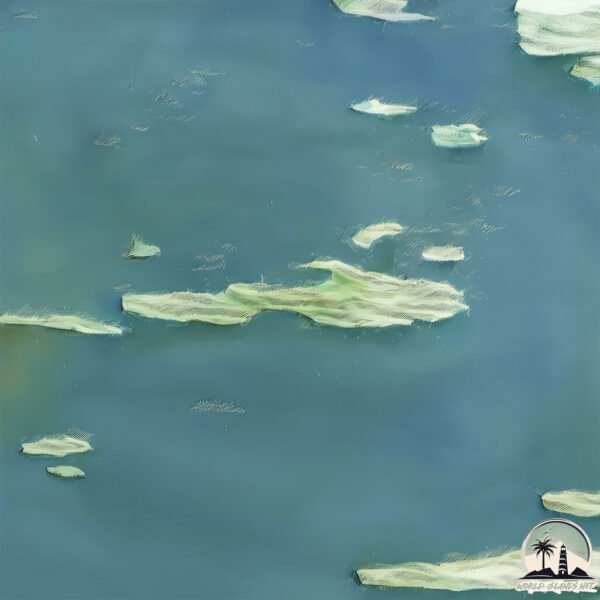Welcome to Amdrup , a Polar island in the Baffin Bay, part of the majestic Arctic Ocean. This guide offers a comprehensive overview of what makes Amdrup unique – from its geography and climate to its population, infrastructure, and beyond. Dive into the details:
Geography and size of Amdrup
Size: 26.4 km²Coastline: 42.9 kmOcean: Arctic OceanSea: Baffin BayContinent: North America
Amdrup is a Medium Island spanning 26 km² with a coastline of 43 km.
Archipel: –
Tectonic Plate: North America – Covers North America and parts of the Atlantic and Arctic Oceans, characterized by diverse geological features and varying levels of seismic activity.
The geographic heart of the island is pinpointed at these coordinates:
Climate and weather of Amdrup
Climate Zone: PolarClimate Details: TundraTemperature: Cold
Climate Characteristics: The tundra climate features long, extremely cold winters and short, cool summers. Vegetation is limited to mosses, lichens, and small shrubs due to the low temperatures and short growing seasons. Biodiversity is low, but some specialized species thrive.
Topography and nature of Amdrup
Timezone: UTC-03:00Timezone places: America/Sao_PauloMax. Elevation: 351 m Mean Elevation: 144 mVegetation: Sparse VegetationTree Coverage: 41%
The mean elevation is 144 m. The highest elevation on the island reaches approximately 351 meters above sea level. The island is characterized by Hills: Gently sloping landforms with rounded tops, having a maximum elevation between 200 and 500 meters. Hills contribute to a varied landscape on islands.
Dominating Vegetation: Sparse Vegetation
Vegetation: 4 vegetation zones – Diverse Island
Infrastructure and Travelling to Amdrup
Does the island have a public airport? no .
Does the island have a major port? no .
The mean population of Amdrup is 0 per km². Amdrup is Uninhabited. The island belongs to Greenland .
Continuing your journey, Saqqarlersuaq is the next notable island, situated merely km away.
Meet Ejnar Milkkesen Danish Discoverer Who Survived Two Savage Winter Stranded In The Artic
news,history,documentary, munting pahayag After they were abandoned by the rest of their expedition in 1910, Ejnar Mikkelsen ...
Meet Ejnar Milkkesen Danish Discoverer Who Survived Two Savage Winter Stranded In The Artic
news,history,documentary, munting pahayag After they were abandoned by ...
news,history,documentary, munting pahayag After they were abandoned by the rest of their expedition in 1910, Ejnar Mikkelsen ...
The Arctic Explorer: Johan Peter Koch | Explorer Biography | Explorer
J.P. Koch participated in Amdrup's expedition to east Greenland in ...
J.P. Koch participated in Amdrup's expedition to east Greenland in 1900 and was one of…… #JohanPeterKoch #biography ...
ZAAR | Holding Your Hand (live session)
Greenland is classified as Developed region: nonG7: Developed economies outside of the Group of Seven, characterized by high income and advanced economic structures. The level of income is High income: OECD.
News – Latest Updates and Headlines from Amdrup
Stay informed with the most recent news and important headlines from Amdrup. Here’s a roundup of the latest developments.
Loading...
Please note: The data used here has been primarily extracted from satellite readings. Deviations from exact values may occur, particularly regarding the height of elevations and population density. Land area and coastline measurements refer to average values at mean high tide.

